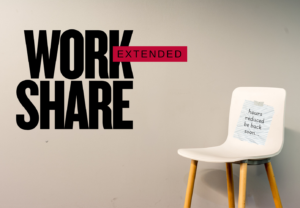
“Right candidates“ vs “bums in seats”: with a talent shortage in Canada few recruiters discount fees — and few clients ask
When asked for a discount, recruiter Dave Hume says to his prospective client, “So which bit of my service don’t you want, exactly?” [4] Sarcasm aside, there is no doubt that discounted fees are generally tied to fewer services — “bums in seats, stack ’em and rack ’em” versus quality candidates — a dangerous proposition with today’s talent shortage.
When you consider time-to-hire and “lost opportunity revenue” are among the most costly aspects of recruiting, speed and quality take precedence over fee-haggling. Average time-to-hire in Canada are devastating for productivity, with average times at:
- 23 weeks for administrative
- 29 weeks for Engineering
- 25 weeks for accounting
- 24 weeks for sales. [5]
Qualified job candidates per hire are at record lows, according to Workable. [6] Shortening time-to-hire means “right candidates” versus “stack ’em high” recruiting.
This issue is compounded by “talent shortages.” In a survey of recruitment agencies, the “top challenge” reported was “talent shortages among candidates” — with 78 percent of recruiters expecting even higher shortages in 2020. [7]

Right candidate, 30%? “Bums in seats” for 15%?
Dave Hume explains the difference between the 15% super-discounted rate (15% of annual salary) for “bums in seats” and 30% for the “right candidate.”: [4]:
“Some clients do like to tell you in no uncertain terms what they usually pay and what their ‘company policy’ is… Some, it’s fair to say, care mostly about putting bums on seats for interview. The ‘shove ’em in and stack ’em high’ approach. Throw enough mud around and some of it’s bound to stick.” He goes on to point out the real secret is quality recruiting — not volume of candidates.
What is the typical fee for top-flight recruiters? Normally 25-30%.
It’s important, too, to remember the math. Recruiter Bill Radin recalled his early years in recruiting this way: “I was in the recruiting business for over two years before I realized that a reduction in fee from 30 percent to 25 percent represented a discount of nearly seventeen percent, not five percent.” [9]
Recruitment fees: smallest cost in employee acquisition
Recruitment fees tend to be the smallest cost in this mix — yet it is the most important expense from the point-of-view of quality human resources. Costs to recruit and train a new employee “range from 1.5x to 3x of salary for the ‘fully-baked’ cost of an employee – the cost including things like benefits, taxes, equipment, training, rent, etc,” according to Eric Koester of MyHightTechStartup. [1] “Since it can cost up to 150% of a departing employee’s salary to replace them (taking into account lost productivity, recruiting fees, retraining, and other outlays), it doesn’t take long to see how an “effective” recruiting program is cost-effective. [8]
Together with ongoing expected “talent shortages” — expected to continue into 2020 — most recruiters are refusing to negotiate fees, and many are increasing their fees. [3] An often-overlooked high expense, in addition to “time-to-hire” is “wrong hire” — arguably the most significant expense of all.
Discounting recruitment fees is not the path to “right hire” and short “time-to-hire.”

Range of fees up to 35%
Fees are based on expertise, deliverable promises, and results, and sometimes the “position.” Recruiters, of course, would love to charge 30-35 percent, and many do. Clients often ask for 15%, well below the national average. Yet, the industry average is the best middle ground for both — where quality service, “right hire” and short “time to hire” meets reasonable fees.
The average varies somewhat by profession or position [see below] with Engineering recruitment topping the rates, but the industry average runs at 21.5%.[2] For good recruitment services, 25% is reasonable. For top recruitment specialists, 30% is common. For poor recruitment services, even the lowest fee percentage would be too much.

Variance by Position
There can be a variance in fee percentages by position. For example, the average fee percentages of Top Echelon in the US (in 2108) varied based on position:
- Financing and Banking average 21%
- Scientific average 20%
- Engineering average 23%
- IT and data processing average 22%
- Sales and Marketing 20%.
However, their overall average fee is 23%, in line with the industry average of nearly 22%. [2]
Executive placement fees
The stakes can be higher with executives and specialists. Although the percentages are similar, the placement fee is considerably more, by virtue of the “starting salary” for these high-paid positions. For Top Echelon, for example:
- Neurosurgery Senior Advisor — average 20% (which represents a $68,200 fee based on starting average salary)
- Primary Care Physician — average 25% (averaging $60,000 fee)
- V.P. of Manufacturing — average 25% (average $58,750 fee)
- V.P. Strategic Services — average 22.5% (average $56,250)
Repeat placements is the goal for both recruiter and client
No recruiter stays in business with a one-time placement fee. Without “top value to clients,” there will be no repeat. Without repeat, no business.
If a recruiter asks 25%, they are stating what they are worth, and they will back it will “top value.” How do you know, as a client? If an agency or recruiter has been in business for several years, successfully, they are delivering “quality.”
Dave Hume explains:
“Your client is not just paying you a fee for the piece of work you’re doing for them… what they’re actually paying for is your experience. They say it takes 10,000 hours of practice to become a master at something and recruitment is no different. Your client is paying for the thousands of calls you’ve already made, the CVs you’ve trawled through, the interviews you’ve conducted and the knowledge you’ve accumulated along the way. They’re paying for the time you’ve spent getting to know the market, the trends and the competition so the day they give you a job to work on, you’re ready to deliver. You’re already saving them time as you can eliminate all the places you don’t need to look.” [4]
Permanent Contact Us Form
NOTES
[1] Investopedia, quoting Eric Koester.
[2] Industry average according to Top Echelon in U.S.
[4] 5 Reasons Why You Shouldn’t Negotiate on Rates… Ever.
[6] Qualified job candidates per hire
[7] Bullhorn data
[8] How much does onboarding new employees cost?
[9] Negotiate for Higher Recruiting Fees by Bill Radin


 Our HR solutions experts can recommend the right mix of HR outsourced services to make your entry into Canada easier.
Our HR solutions experts can recommend the right mix of HR outsourced services to make your entry into Canada easier.  Pivotal Employment Management Services co-hires your workforce, simplifying entry of your business in Canada.
Pivotal Employment Management Services co-hires your workforce, simplifying entry of your business in Canada. 















